Welcome to Montenegro, the undiscovered jewel of the Balkans, where majestic mountain peaks meet the crystal-clear waters of the Adriatic Sea. This small country abounds in natural treasures, historic sites and vibrant culture.
Whether you’re a hiking enthusiast, a history buff or simply looking for relaxation, Montenegro is the destination for you.
In this article, I suggest a 4-day itinerary to visit Montenegro, with the must-see towns, a selection of good addresses and practical tips to help you prepare for your trip.
Summary
Montenegro at a glance
- How do I get there? The easiest way is to fly to Dubrovnik airport in Croatia. From there, it’s a twenty-minute drive to the border with Montenegro.
- Getting around It’s almost essential to rent a car on site to have the freedom to visit the whole region.
- How long to stay? To discover the most beautiful part of the country, on the Adriatic coast, 4 days will give you a good overview of the region. If you want to explore the more rural areas, you can add a few more days. You can also extend your stay by spending two or three days in Dubrovnik, Croatia.
- When should you go? Prefer spring or autumn to take advantage of the fine weather and avoid the heat of summer.
- How much does it cost? Montenegro is an inexpensive destination. In Montenegro, the cost of living is around 30% lower than in France or UK. You can also expect to pay €160 for a week’s car rental from Dubrovnik airport, with the option of driving to Croatia’s neighbouring countries (including Montenegro). The price of accommodation will depend on the dates of your stay and the level of comfort you choose, but you’ll be able to find some very inexpensive addresses (see a few tips later in this article).
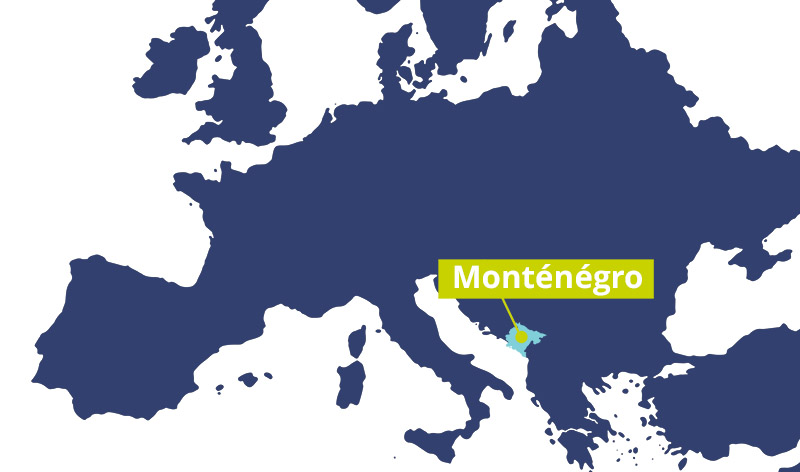
Understanding Montenegro: a little history and geography
Montenegro is a small country about the size of Nord-Pas de Calais. The literal translation of its name is “Black Mountain” , in reference to the forests that once covered its mountains.
It borders Croatia, Serbia, Albania, Bosnia-Herzegovina and Kosovo. Montenegro has a population of 600,000, and its main language is Southern Chtokavian (a variant of Serbo-Croatian). The average gross salary is just under €890 , but this masks major disparities: the coastal region, which is very popular with tourists, is doing rather well, while the north of the country has an unemployment rate of 36%, with a quarter of the population living below the poverty line.
The state of Montenegro came into being in 2006, following the dissolution of Serbia and Montenegro. Montenegro is currently a candidate for membership of the European Union.

Montenegro in 4 days: the itinerary
This map shows a suggested itinerary for a 4-day tour of Montenegro. This itinerary takes in the most beautiful regions of the country, allowing you to visit the mouths of Kotor, medieval cities and more natural areas such as Lake Skadar.
The stages, day by day :
- Day 1 :
Visit to the town of Kotor - Day 2 :
Morning visit to the town of Perast
In the afternoon, drive to Cetinge before continuing on to Lake Skadar - Day 3:
In the morning, off to Virpazar to discover the National Park.
Afternoon visit to Stevi Stefan - Day 4 :
Morning visit to the old town of Budva
Afternoon visit to the port of Tivat
Why focus on the coastal region?
Montenegro’s coastal region is the most beautiful in the country. It’s here that you’ll see the most sumptuous landscapes. The rest of the country is more rural and less interesting from a tourist point of view. The same applies to Podgorica, the capital, which was almost entirely razed to the ground during the Second World War and therefore has fewer historical treasures.
What to do in Montenegro 8 must-sees
Kotor, the fortified town
Start your stay in Montenegro in style with the mouths of Kotor, a magnificent, mountain-studded bay that opens onto the Adriatic Sea.
At the far end of this bay lies the town of Kotor, an impressive fortified city built between the 15th and 18th centuries and nicknamed one of the “Pearls of the Adriatic”. For a long time, this former trading town was under Venetian rule, an influence that can be seen in the town’s architecture.
Nowadays, however, the city’s port is crowded with cruise liners and thousands of tourists. To avoid the crowds, visit the city center in the early morning or evening, especially to enjoy the narrow streets without being jostled.
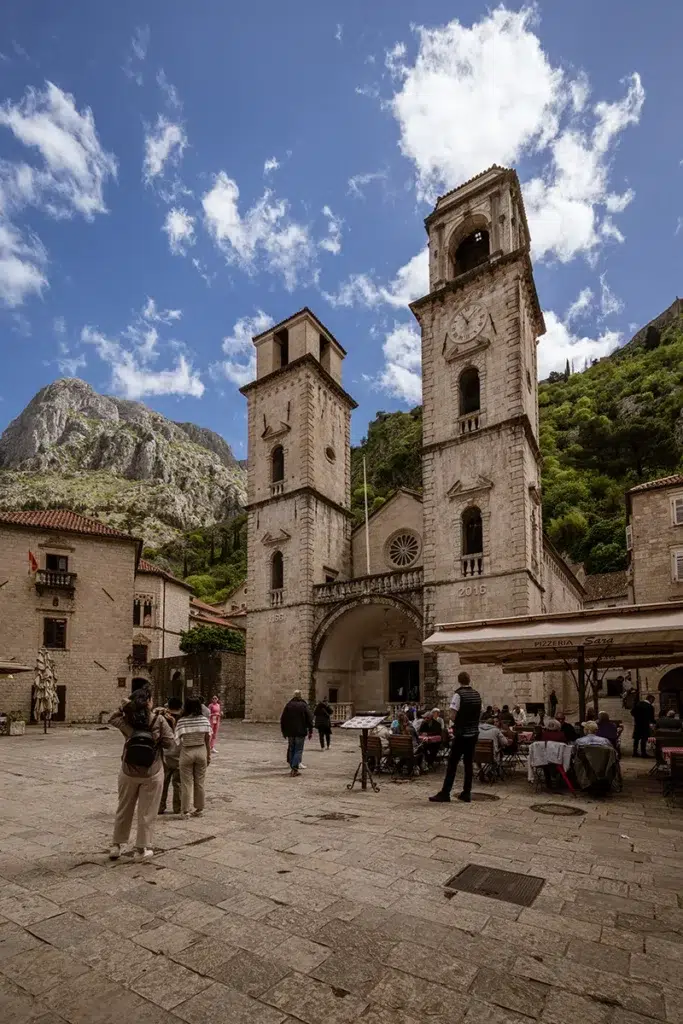
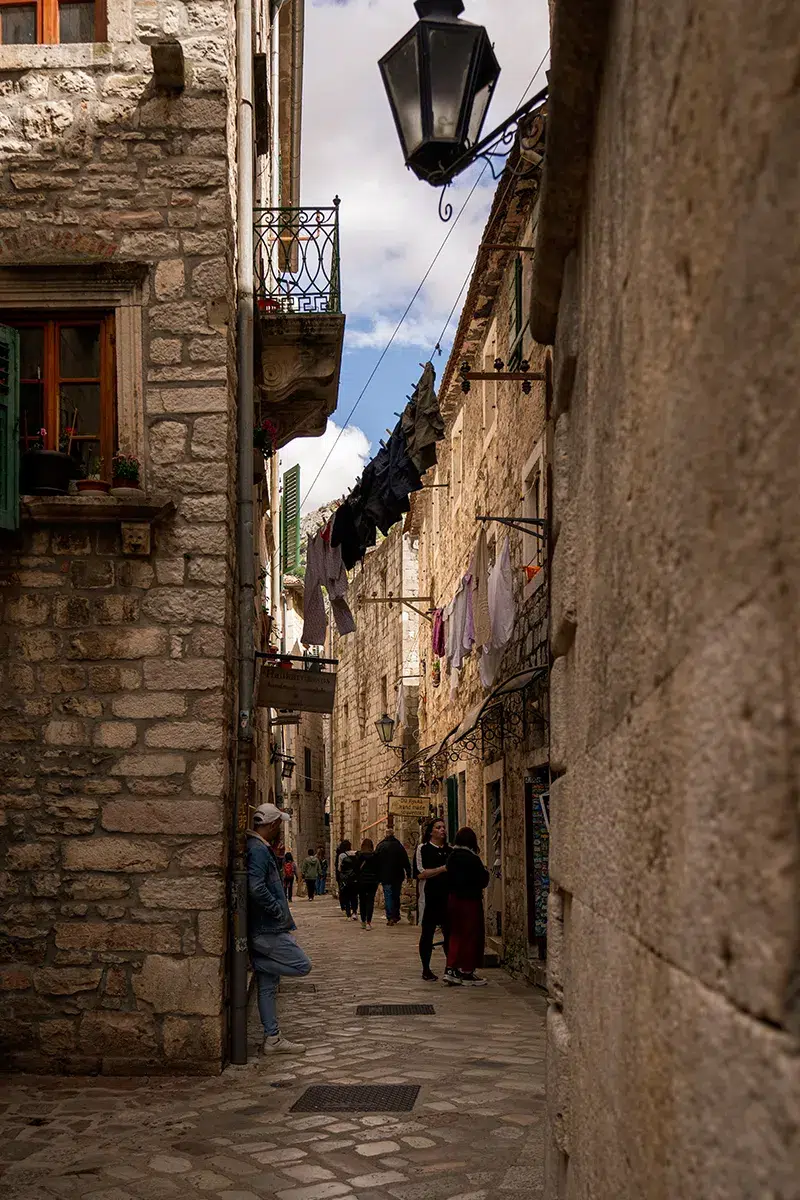
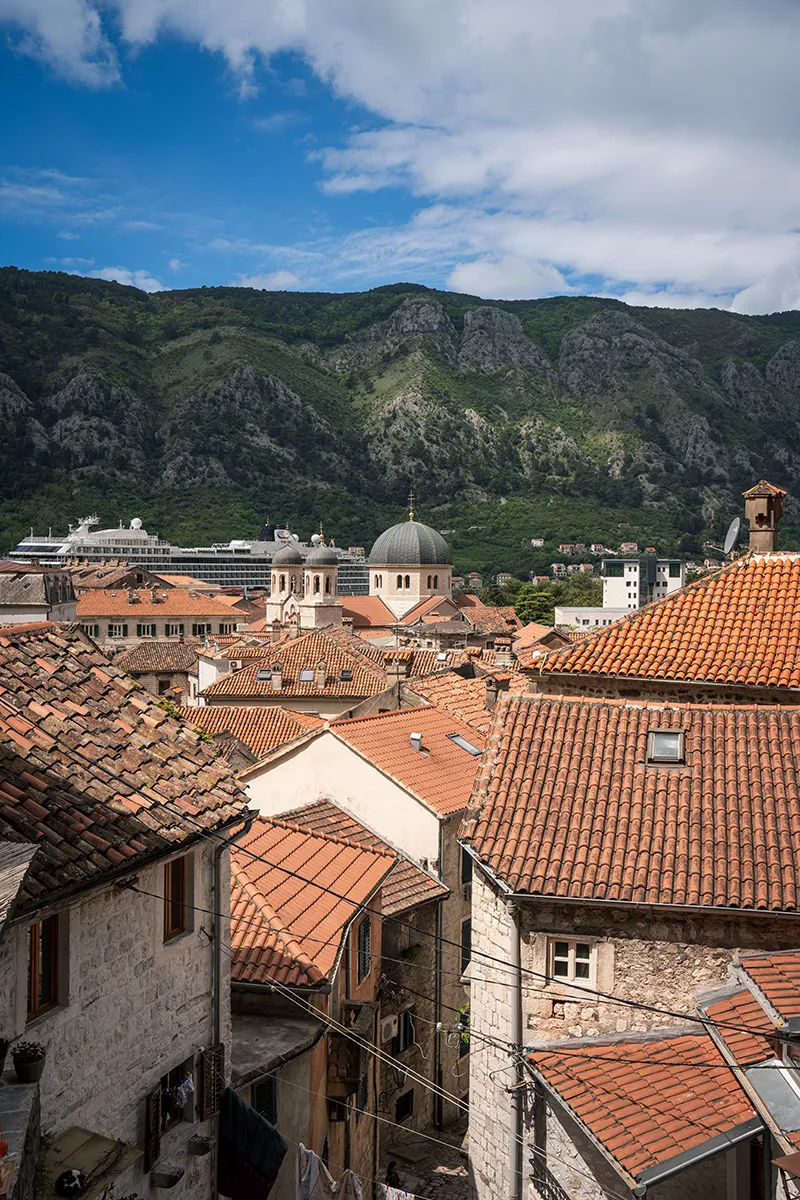
If you’re in good physical condition, climb to the top of the town for a breathtaking view of the bay. There are two options: climb up through the town center, but at the prohibitive price of €15 per person, or take an alternative route, which is completely free of charge and accessed via the old hydroelectric station. At the top of the town, an opening in the ramparts allows you to sneak into the fortress.
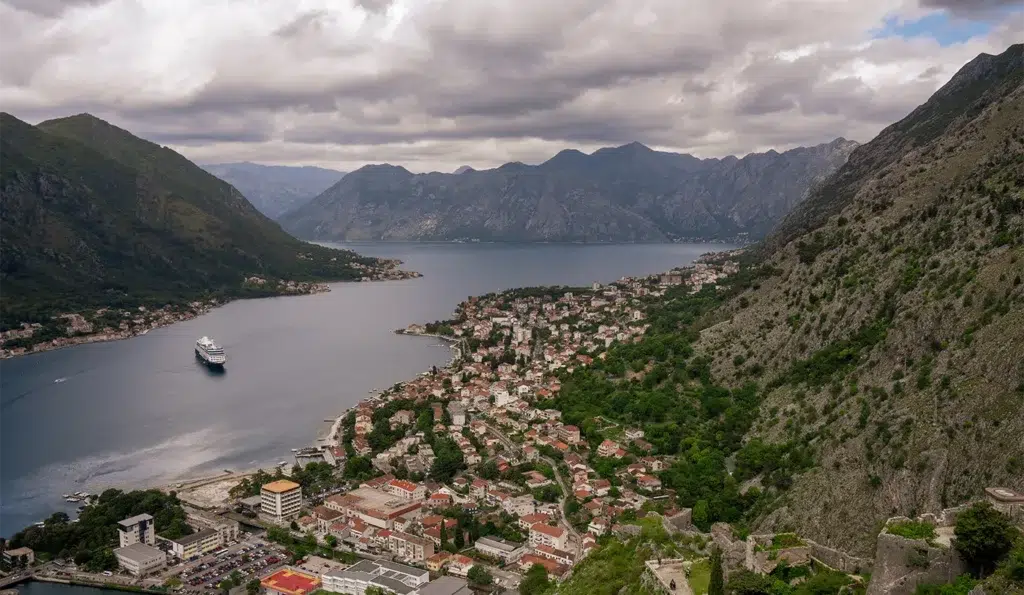
For ice cream lovers
To refresh yourself, I recommend a stop at Marshall’s Gelato, where you’ll find tasty artisanal ice creams – a real favorite!
Perast, the postcard
A few kilometers from Kotor, Perast was my favorite town of the trip. This port was developed from 1420 onwards, when the Republic of Venice annexed the mouths of Kotor. Perast’s golden age came in the 18th century, when the town boasted no fewer than four shipyards and some 1,000 boats for trading and fighting pirates!
Today, it’s a peaceful, picture-postcard setting with palaces and villas, and a church whose 55-meter steeple is the tallest in Montenegro.
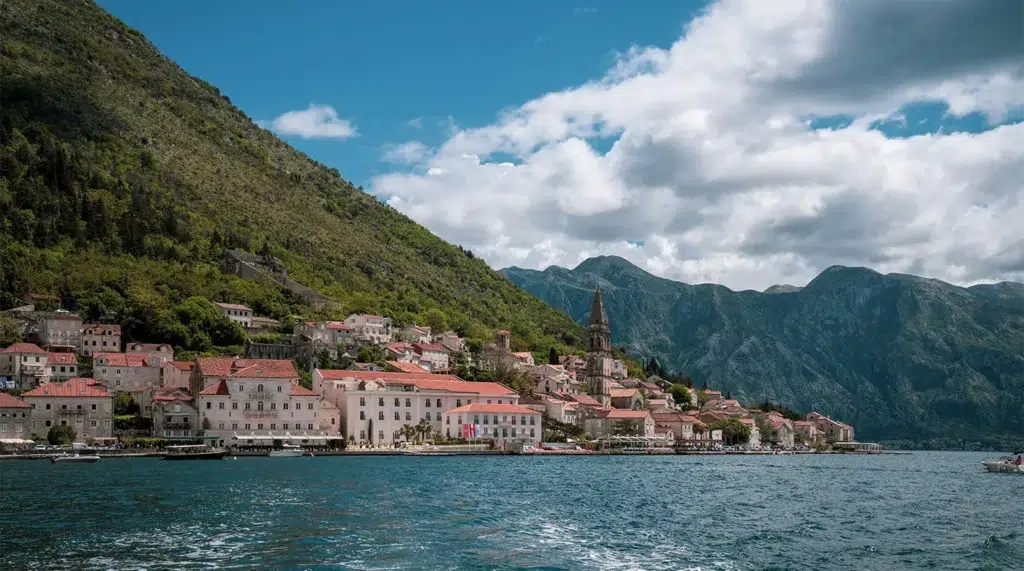
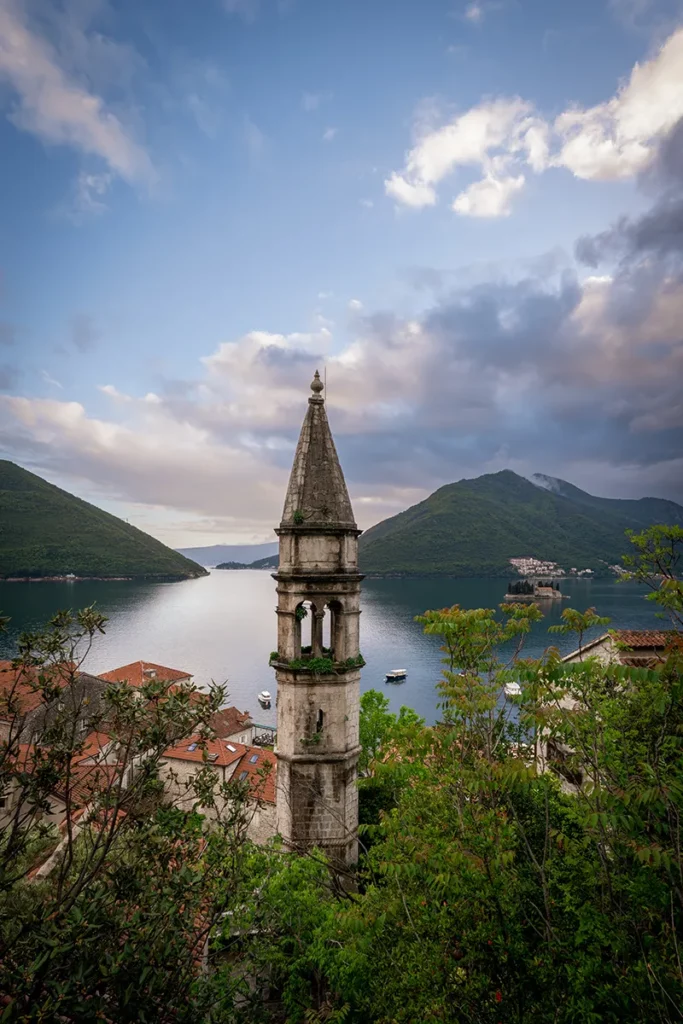

As you stroll along the seafront, you won’t want to miss the islands of Saint-Georges and Notre-Dame du Rocher. The former is private and therefore not open to the public, but the latter is easily accessible by boat – the crossing takes just 3 minutes. Several boatmen offer their services, so don’t hesitate to negotiate, as prices can vary enormously. 5 per person for the round trip is a good price.
Once on the island, visit the chapel (€3 admission), topped by a blue dome that gives it a Byzantine look. Inside, you can admire many of Tripo Kokolja’s paintings on the walls and ceiling, as well as a small museum.
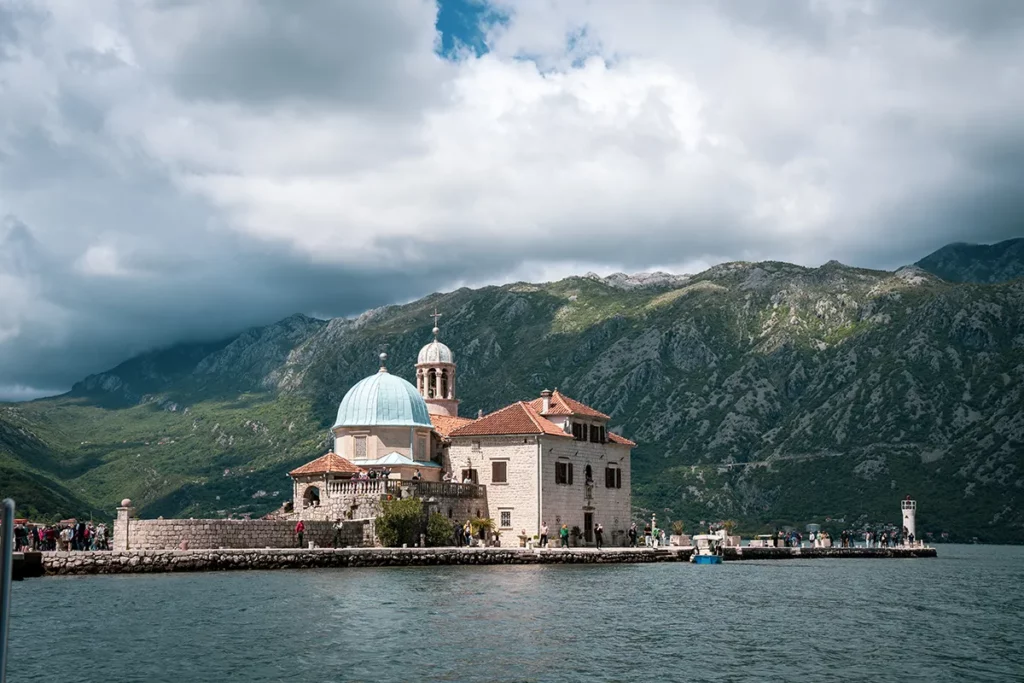
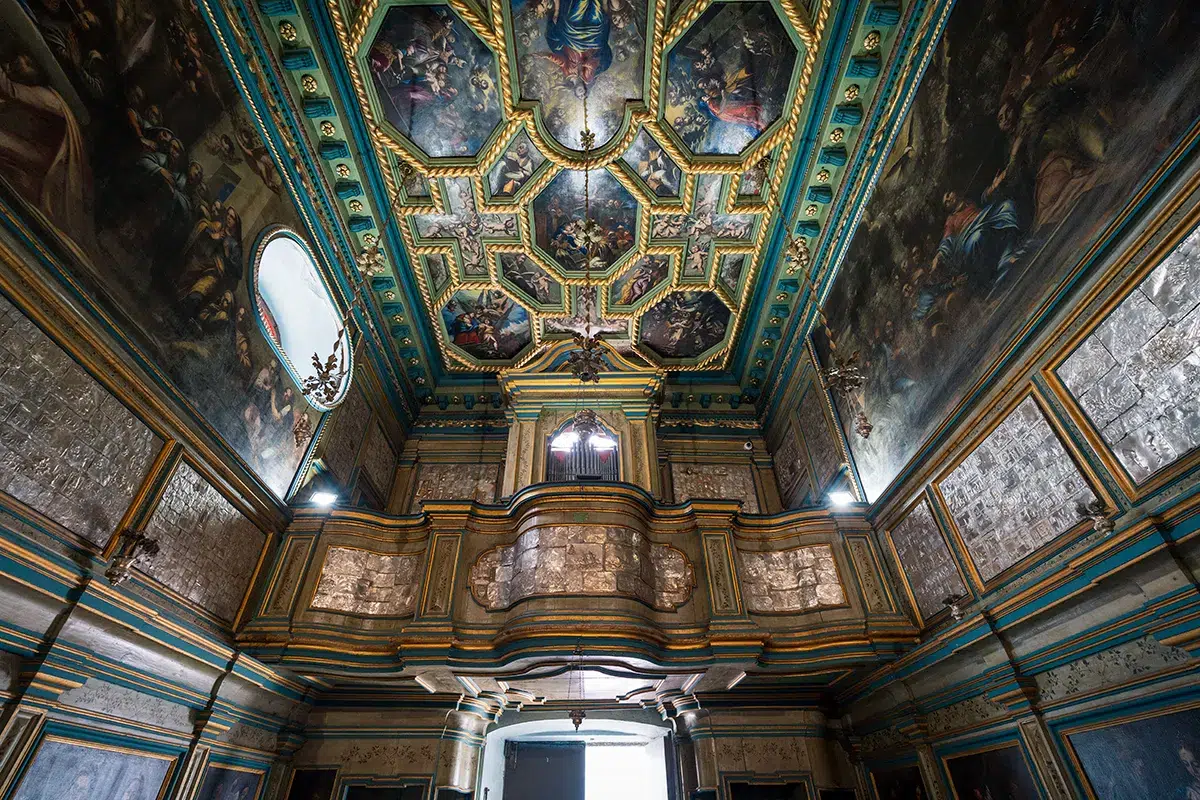
Cetinge, the ancient capital
With its colorful houses and 19th-century buildings, Cetinge is a town with a certain charm. Unfortunately, a number of derelict villas give the impression of a town in decline.
You can spend an hour or two touring the town, and a little longer if you want to visit the city’s museums, such as the King Nicholas Museum, housed in the home of Montenegro’s last ruler.
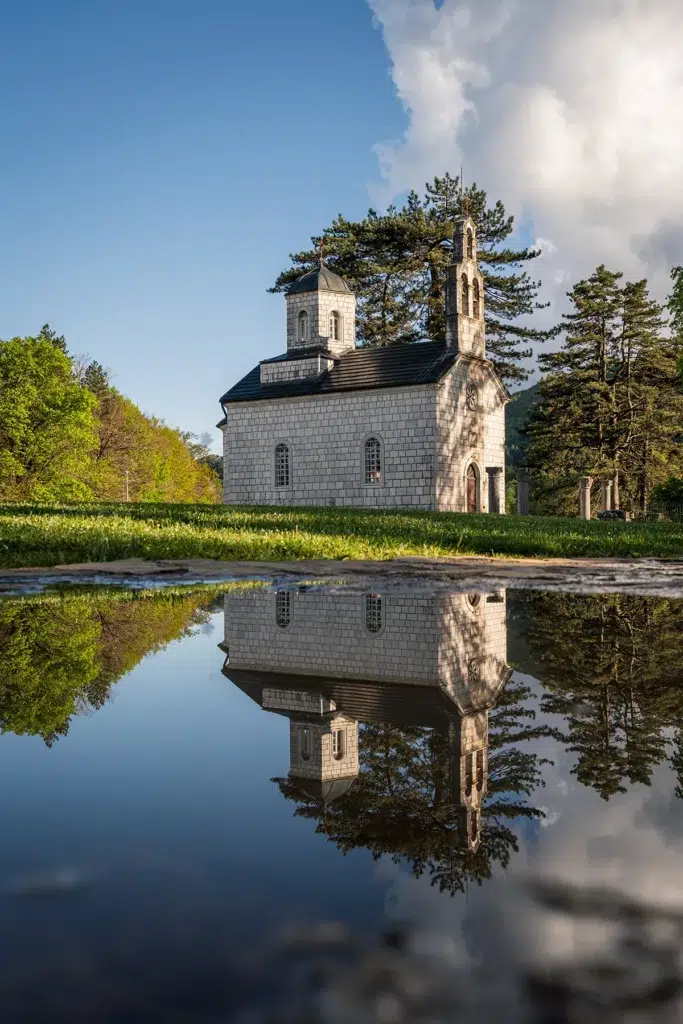
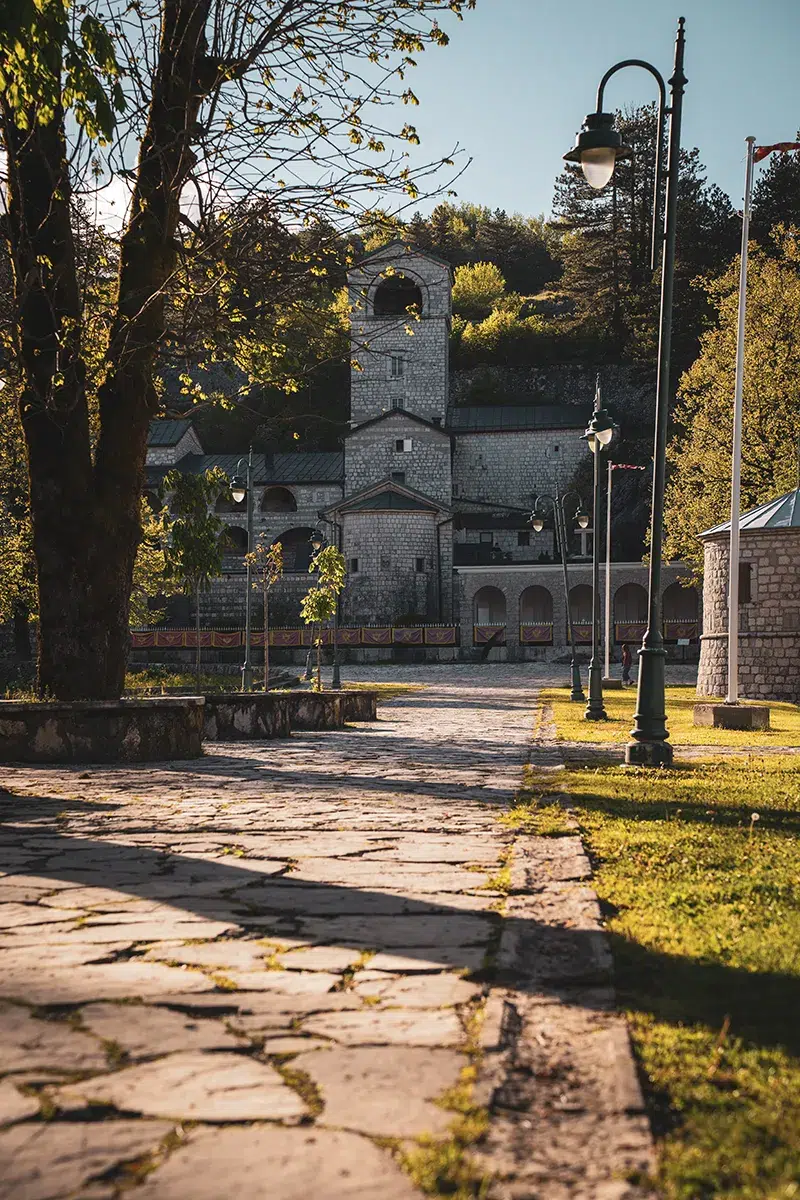
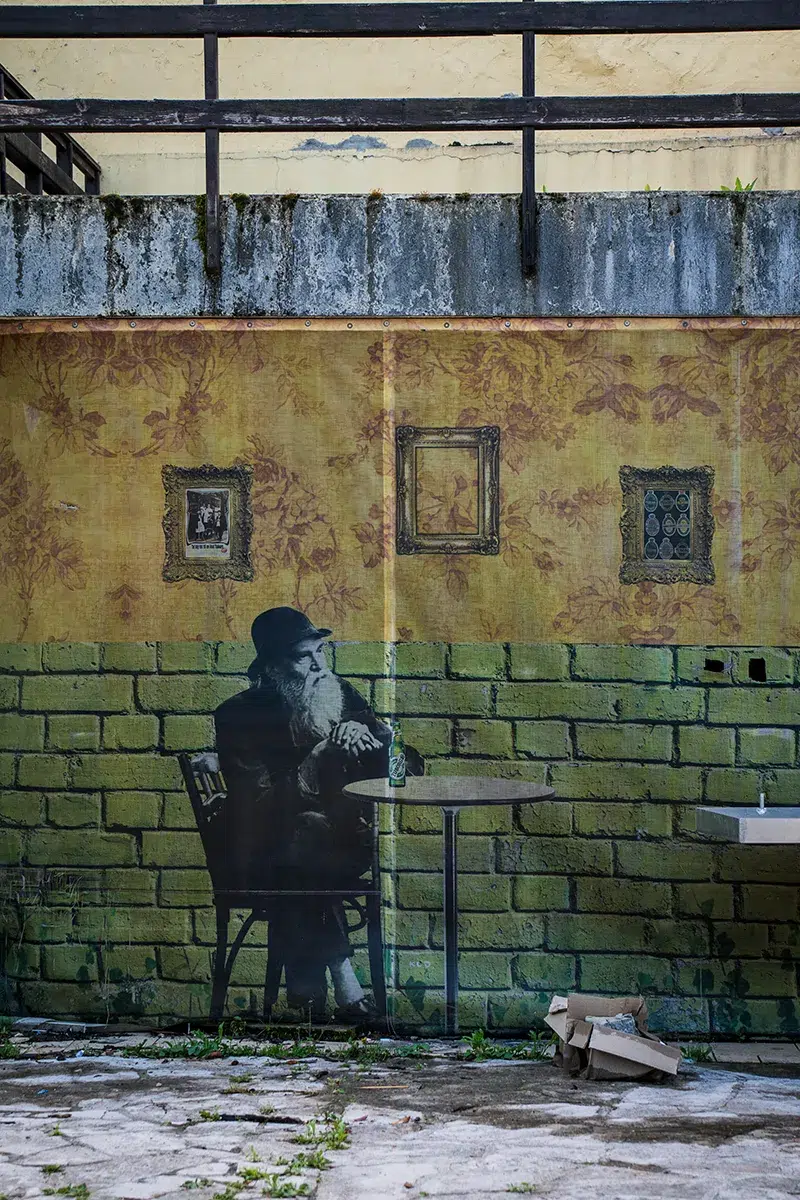
Skadar lake viewpoint
Lake Skadar is the largest lake in the Balkans, located between Montenegro and Albania. It is 40km long and 12km wide. One of the best vantage points for contemplating the lake is in the mountains. It’s a particularly beautiful sight at sunset. You can find the coordinates of this viewpoint on the route map at the top of this article.
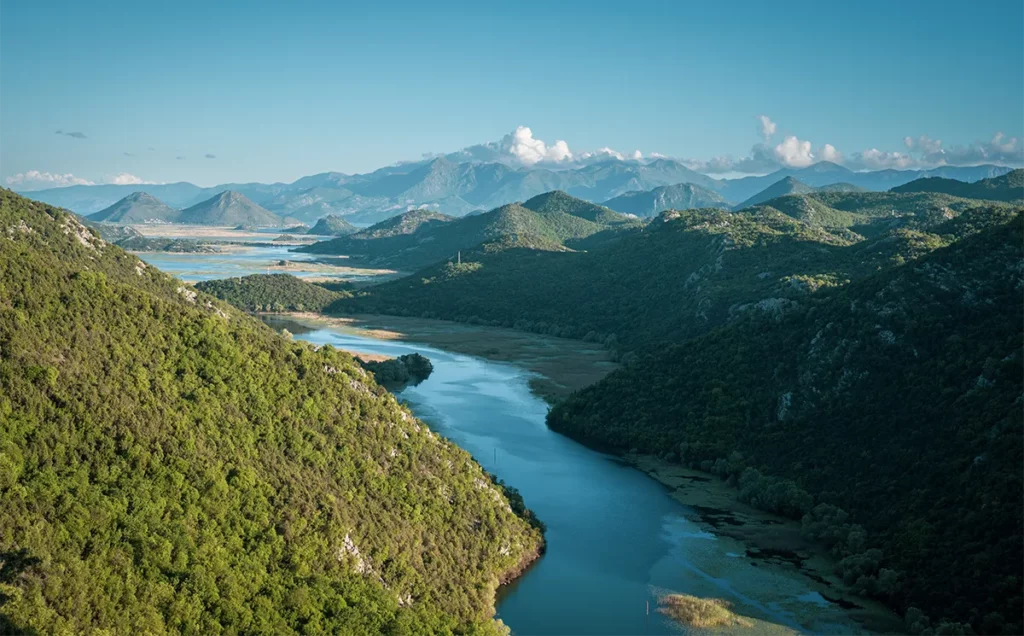
Tip for accommodation
I highly recommend a stop at Rooms Dujeva Drago, a guesthouse run by local people. The rooms are very clean and you can enjoy 100% local cuisine : fish caught in the river below, vegetables grown in the garden, homemade cheese and wine… It’s a real treat, and at a very reasonable price!
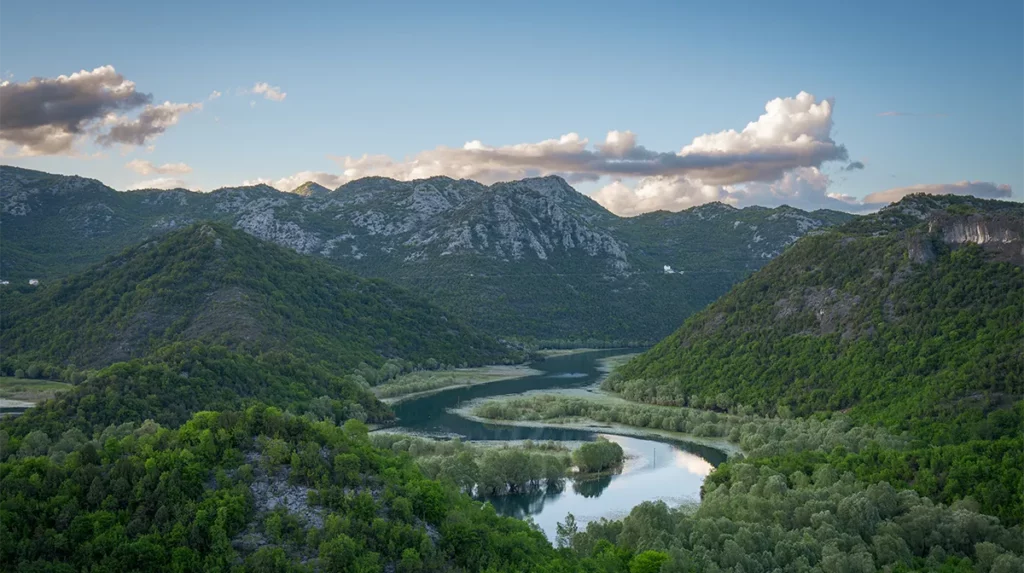
Virpazar, gateway to Lake Skadar National Park
The small town of Virpazar lies on the shores of the lake. Here, you can easily find a boatman who will take you on a tour of the lake to admire the flora and fauna of the region.
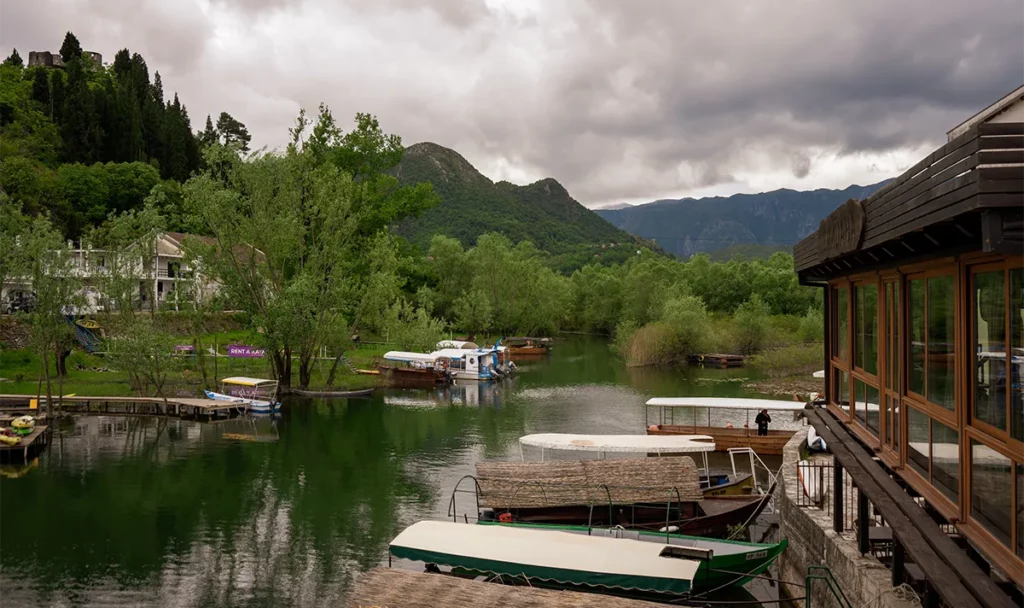
Montenegro, the land of cats!
Cats are plentiful in Montenegro, and you’ll find plenty of them in the towns. They’re not shy, and come easily to meet tourists. In Kotor, you’ll even find a cat museum!
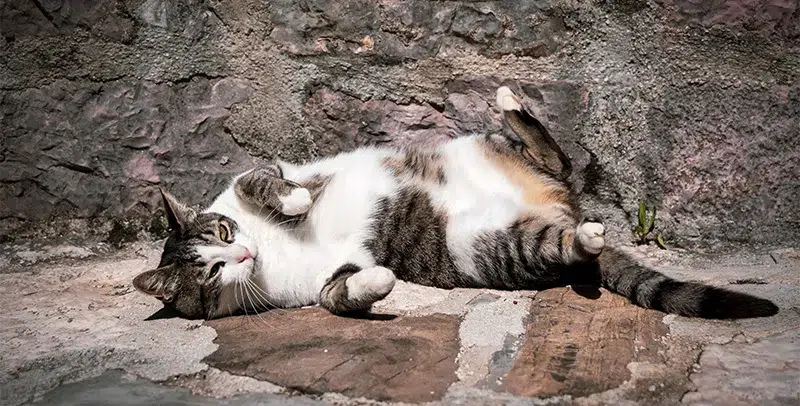
Sveti Stefan, a little Mont Saint-Michel
This town is famous for a small rocky islet on which several dwellings have been built. You’ll have to be content with looking at it from a distance, as it’s impossible to get in: it’s a large private hotel complex that restricts access to residents only.
A pleasant, well-maintained coastal path leads you along the coast, past small coves of unparalleled charm and translucent water. Please note, however, that access to these coves may be subject to a fee in summer, as they are all managed by the same hotel group. In the off-season, however, you can stroll freely.
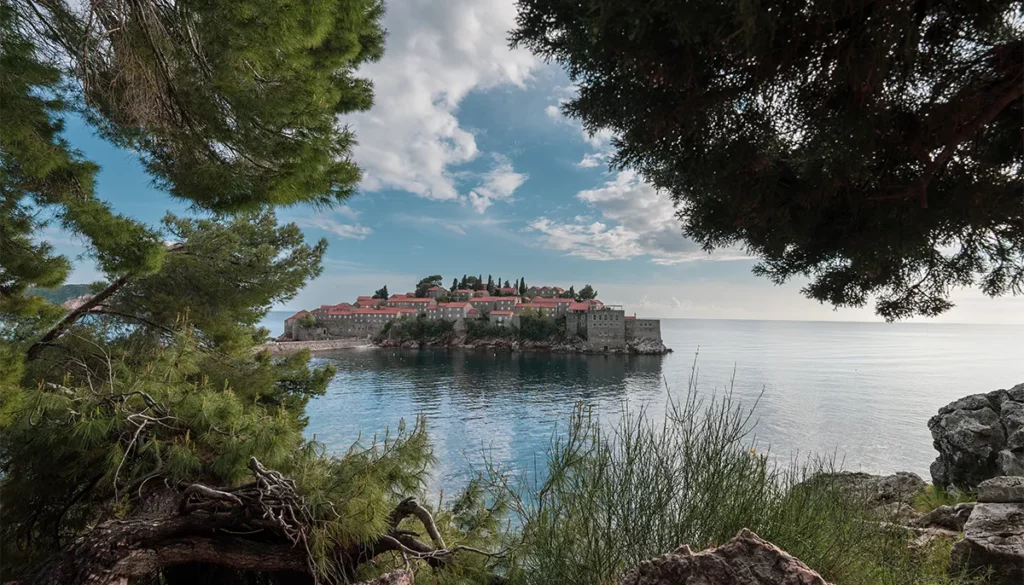
Budva, a historic center drowned in a modern city
Budva is an ultra-touristy city where huge modern buildings rise up against the sea. This urban jungle has no charm whatsoever, but take the time to visit the historic center , for amidst these buildings lies a charming, typical old town with its ramparts and citadel.
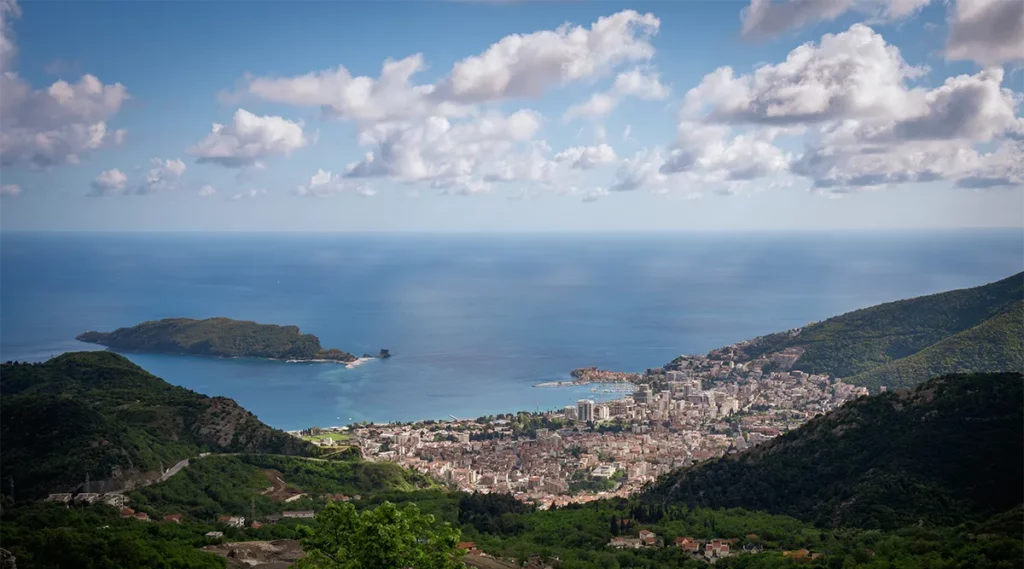
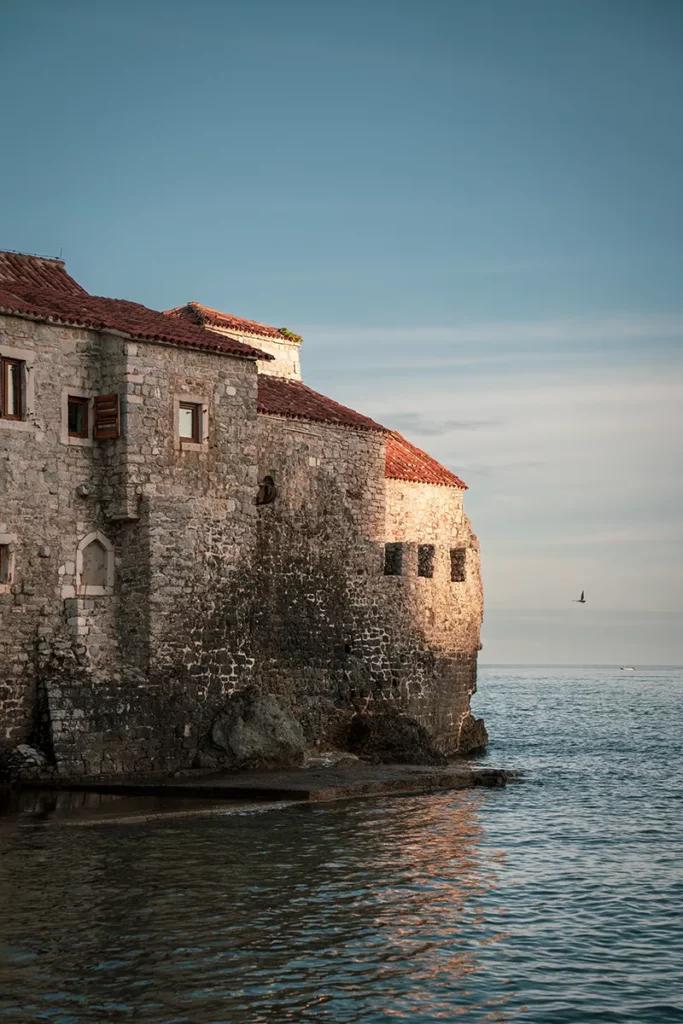
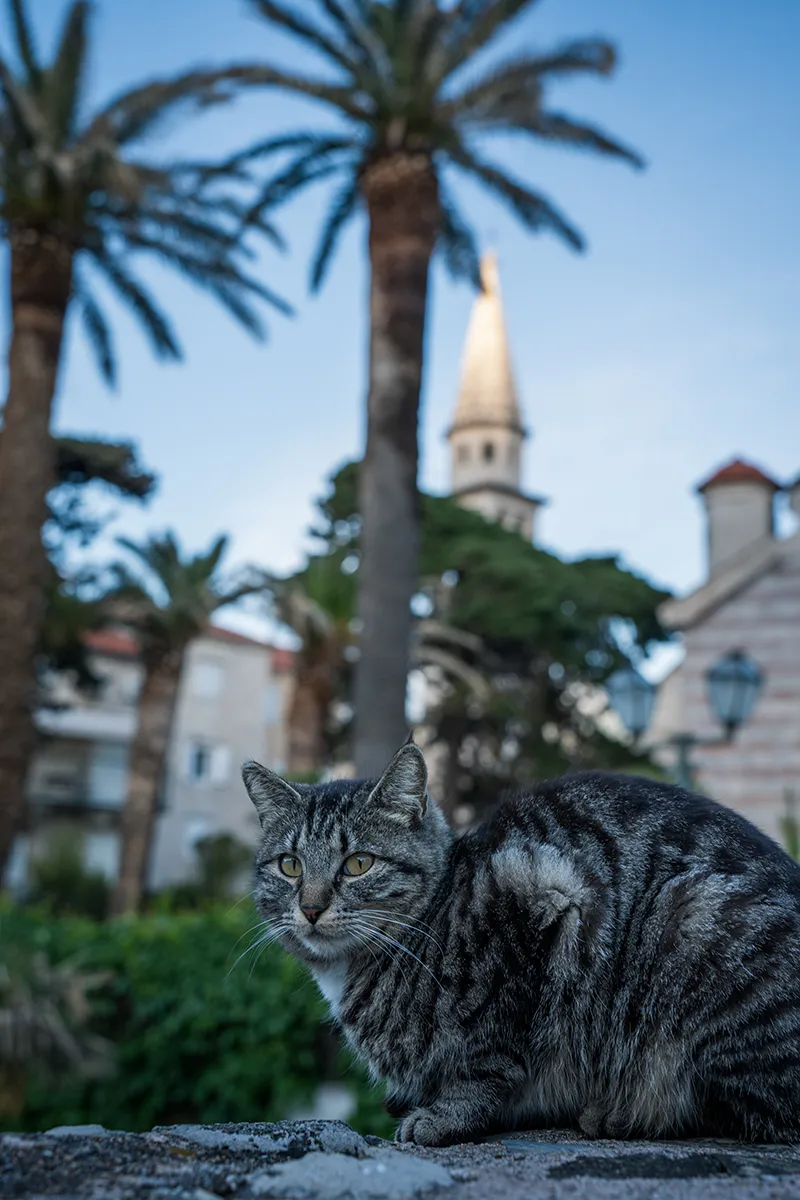
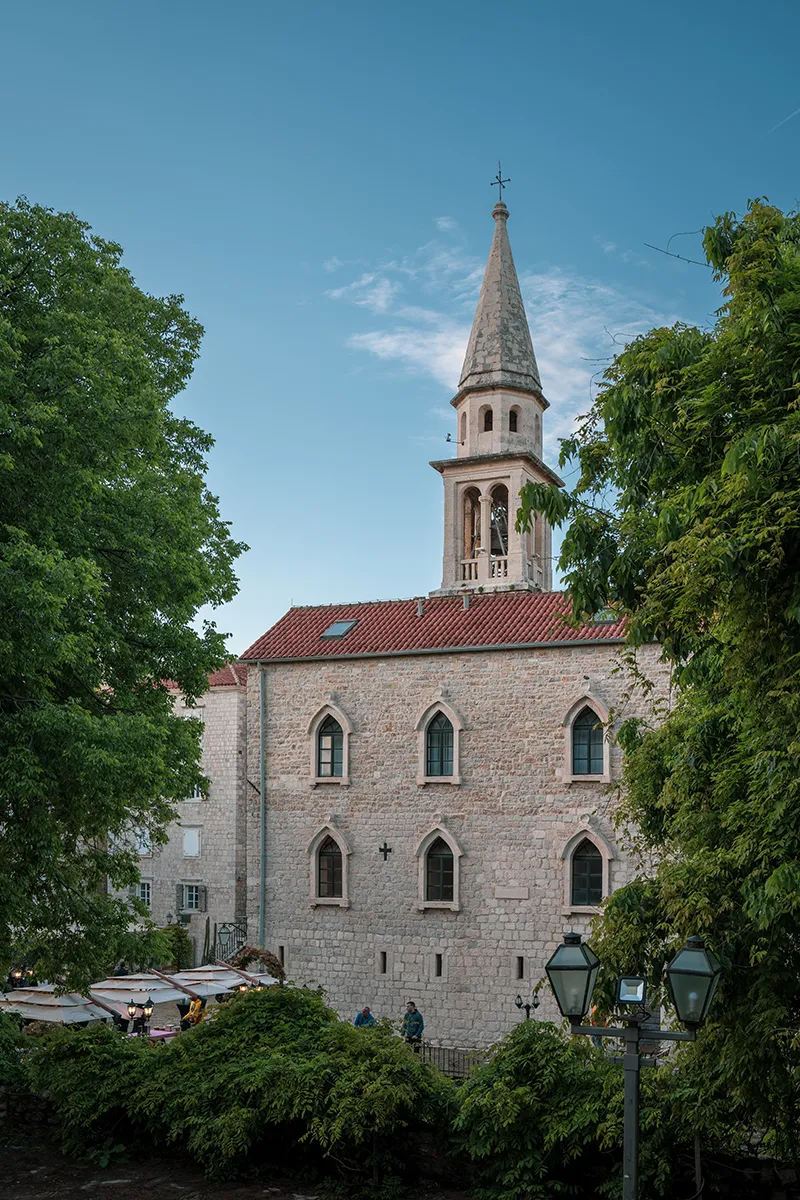
A charming hotel near Budva
If you want to stay by the sea without breaking the bank and close to Budva, I recommend Hôtel Poséidon. This modern establishment is located in an off-center but quiet area and offers good value for money.
Tivat, Montenegro’s version of Saint-Tropez
Tivat, and more specifically Porto Montenegro, the town’s marina, is considered the Monaco or Saint-Tropez of Montenegro. Once a derelict naval base, Porto Montenegro was transformed into a luxury marina in 2016.
Here, luxury boutiques rub shoulders with yachts and chic restaurants. No wonder Tivat is the most expensive city in Montenegro. Restaurant prices are close to those in Paris.
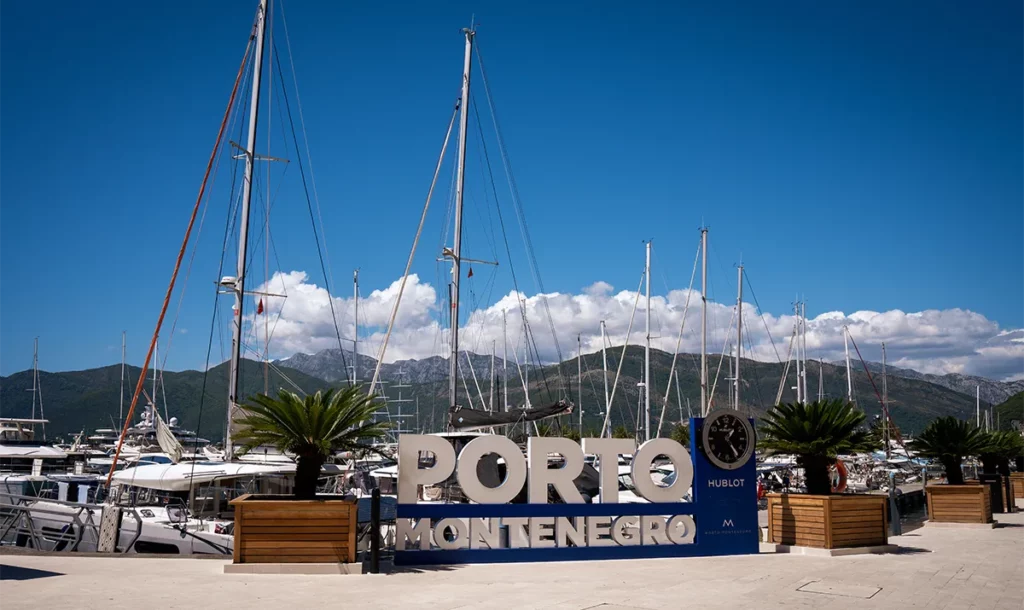
Where to stay? Find a hotel in Montenegro
Enter the dates of your stay on this map to find out which establishments are available and their rates:
The map above contains affiliate links, meaning that I earn a commission if you book accommodation after clicking on one of these links. It doesn’t cost you any more, but it helps me to develop Culturez-vous. Thanks a lot! ☺️
A little vocabulary: words to know for a trip to Montenegro
To help you communicate with Montenegrins in their own language, here are some common words:
Hello : Dobar dan
Good evening: Dobro veče (pronounced Dobro Vetché)
Goodbye: Doviđenja (pronounced Dovidyenya)
What is your name : Kako se zovete?
My name is… : Zovem se…
How are you? Kako ste?
Please: Molim
Thank you: Hvala
Yes: Da
No: Ne
Excuse me: Izvinite (pronounced Izvinité)
A la tienne: Prijatno
Good to know: practical information for planning a trip to Montenegro
Bank: beware of fees
Although the currency used in Montenegro is the Euro, bank charges are often applied to card payments and withdrawals, as the country is not part of the European Union. Check with your bank before you leave to find out what charges apply.
Many shops and restaurants do not accept credit cards. So be sure to take some cash with you.
Telephony: remember to buy a suitable package
Most cell phone packages are not valid there, and you run the risk of overcharging.
To avoid any disappointment, consider changing your package or taking out an international option that will enable you to communicate and connect to the Internet.
Be careful on the roads
Montenegrins are not exemplary drivers. Speed limits are not often respected, and overtaking on white lines is commonplace. So take extra care on the roads!
All that’s left for me to do is wish you a pleasant journey!

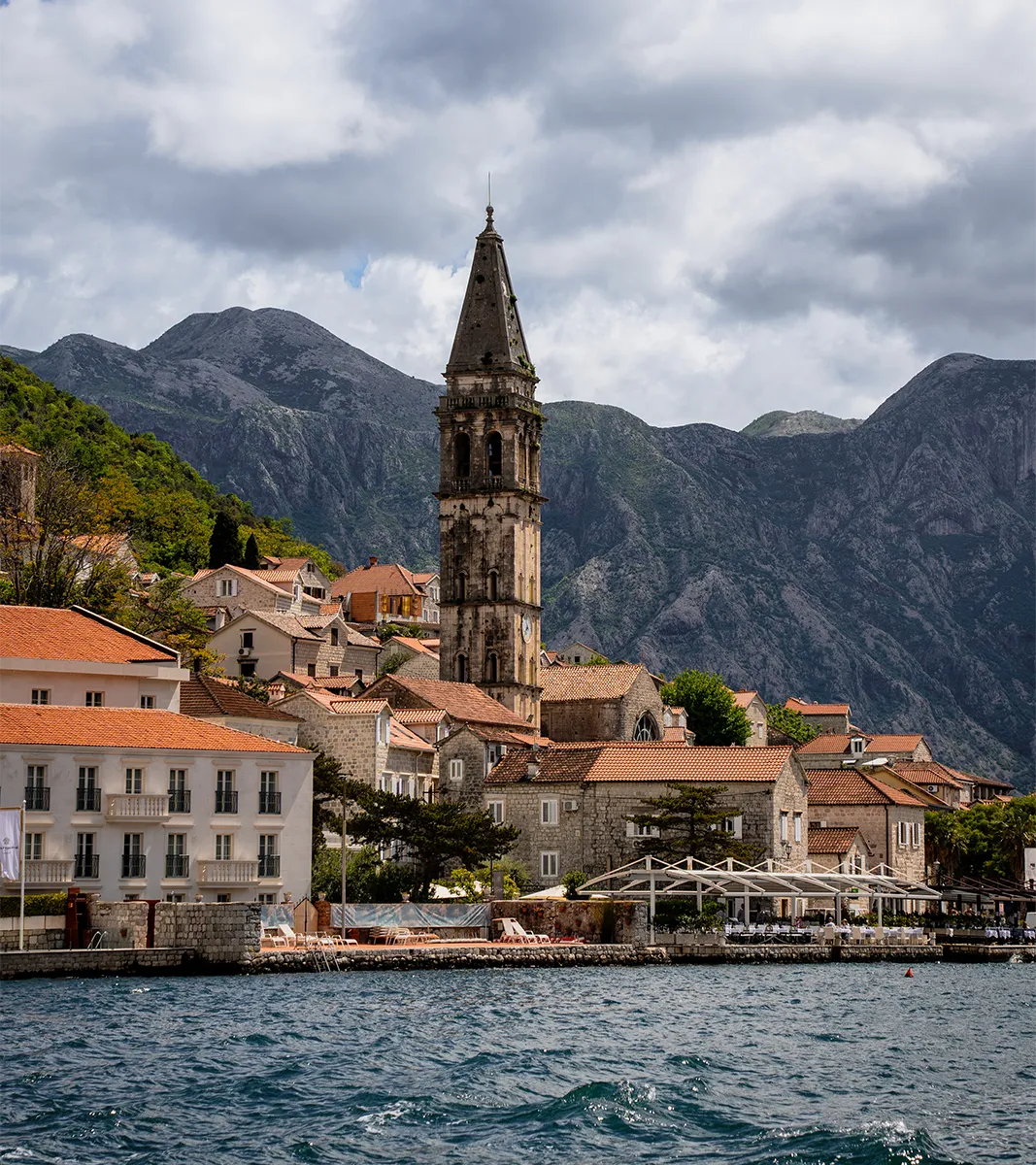



No Comments
Leave a comment Cancel